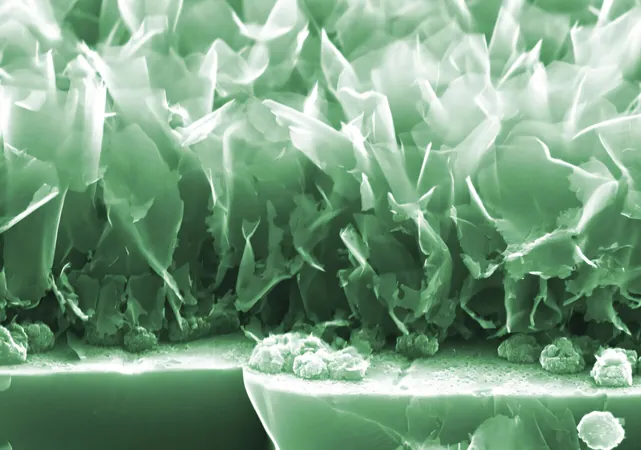
Revolutionizing Energy Storage: Nitrogen and Argon Plasma Transform Carbon-Based Supercapacitors
2025-04-03
Author: John Tan
Introduction
In a groundbreaking study, researchers from Skoltech and the Institute of Nanotechnology of Microelectronics have unveiled new insights into the enhancement of carbon-based supercapacitor electrodes through plasma treatment. This innovative approach promises to elevate the performance of supercapacitors, crucial energy storage devices that serve as a perfect complement to batteries in various applications, from electric vehicles to port machinery.
The Supercapacitor Advantage
Supercapacitors have gained attention due to their unique ability to deliver and absorb energy almost instantaneously, making them ideal for applications requiring rapid power bursts. Their impressive lifespan, minimal wear and tear, and broader temperature tolerance further distinguish them from traditional batteries. They also pose significantly lower fire risks compared to metal-ion technologies and can be disposed of in an eco-friendly manner, making them a greener alternative for energy storage.
Research Findings and Methods
The research, published in the journal Electrochimica Acta, focuses on the pivotal role of improving electrode performance. "We're exploring modifications in the carbon materials of supercapacitor electrodes to harness greater energy storage capabilities," explained Assistant Professor Stanislav Evlashin, the lead investigator. The team identified two primary methods to increase energy retention: enhancing the surface area through intricate designs or incorporating additional atoms into the carbon structure.
In their quest, the researchers examined the effects of plasma treatments with six different chemical compositions on carbon nanowalls. Remarkably, only the combination of nitrogen and argon plasma treatment demonstrated the ability to effectively modify the material, resulting in a doubling of its areal capacitance. This enhancement, while not unprecedented, provides valuable insight into the electrochemical processes at play.
Mechanism of Plasma Treatment
Evlashin explained the sequence of changes occurring during this treatment. Firstly, the residual amorphous carbon left after the growth of nanowall structures is eliminated. This is followed by the creation of new defects and the integration of heteroatoms like nitrogen into the carbon matrix, which contributes to improved pseudocapacitance.
Implications and Future Directions
The implications of these findings are vast. Supercapacitors are gaining traction not only in electric transportation but also in healthcare, by providing reliable power to critical medical devices, data centers, and telecommunication systems. They support the stabilization of electrical grids by balancing supply and demand, ensuring that energy is available precisely when and where it is needed.
As research continues, the potential for supercapacitors in emerging technologies—such as IoT sensors, wearables, and portable electronics—could redefine how we harness energy in our increasingly tech-driven world. The advancements brought about by plasma treatment could lead to supercapacitors that are not only more efficient but also more sustainable, reinforcing their role as a cornerstone of future energy systems.



 Brasil (PT)
Brasil (PT)
 Canada (EN)
Canada (EN)
 Chile (ES)
Chile (ES)
 Česko (CS)
Česko (CS)
 대한민국 (KO)
대한민국 (KO)
 España (ES)
España (ES)
 France (FR)
France (FR)
 Hong Kong (EN)
Hong Kong (EN)
 Italia (IT)
Italia (IT)
 日本 (JA)
日本 (JA)
 Magyarország (HU)
Magyarország (HU)
 Norge (NO)
Norge (NO)
 Polska (PL)
Polska (PL)
 Schweiz (DE)
Schweiz (DE)
 Singapore (EN)
Singapore (EN)
 Sverige (SV)
Sverige (SV)
 Suomi (FI)
Suomi (FI)
 Türkiye (TR)
Türkiye (TR)
 الإمارات العربية المتحدة (AR)
الإمارات العربية المتحدة (AR)